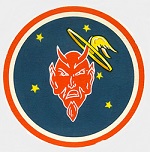Air Force 1 AF10150 USAAF Lockheed P-38J Lightning Interceptor - Major Thomas McGuire, "Pudgy IV", 431st Fighter Squadron "Red Devils", 475th Fighter Group, August 1943 (1:48 Scale)
"Why should we have a navy at all? There are no enemies for it to fight except apparently the Army Air Force."
- General Carl Spaatz, Commander of the US 8th Army Air Force, after WWII
 It was fast, heavily armed and extremely versatile. And many believe the Lockheed P-38 Lightning to be the finest American fighter of WWII. Its low-drag, aerodynamic shape and heavy weight enabled this twin-engine, twin-boomed aircraft to accelerate to high speeds faster than any previous warplane, making it a potent fighter and a superb fighter-bomber. Popular among fighter pilots, P-38s carried out the intercept mission that downed Japanese Admiral Isoroku Yamamoto, who planned the attack on Pearl Harbor. In the Mediterranean, Luftwaffe pilots showed respect for the Lightning by calling it "der gabelschwanz teufel" (the forked-tail devil). The ultimate P-38 was flown by Dick Bong and Tommy McGuire, who were among the most successful American fighter pilots in history.
It was fast, heavily armed and extremely versatile. And many believe the Lockheed P-38 Lightning to be the finest American fighter of WWII. Its low-drag, aerodynamic shape and heavy weight enabled this twin-engine, twin-boomed aircraft to accelerate to high speeds faster than any previous warplane, making it a potent fighter and a superb fighter-bomber. Popular among fighter pilots, P-38s carried out the intercept mission that downed Japanese Admiral Isoroku Yamamoto, who planned the attack on Pearl Harbor. In the Mediterranean, Luftwaffe pilots showed respect for the Lightning by calling it "der gabelschwanz teufel" (the forked-tail devil). The ultimate P-38 was flown by Dick Bong and Tommy McGuire, who were among the most successful American fighter pilots in history.
Pictured here is a 1:48 scale replica of a USAAF Lockheed P-38J Lightning interceptor dubbed "Pudgy IV", which was piloted by Major Thomas McGuire who was attached to the 431st Fighter Squadron "Red Devils", 475th Fighter Group, during August 1943.
Now in stock!
Dimensions:
Wingspan: 12-3/4-inches
Length: 9-1/4-inches
Release Date: August 2017
 Historical Account: "An Ace in Two Days" - In March 1943, McGuire was sent to the Southwest Pacific as a member of the 9th Fighter Squadron, 49th Fighter Group, Fifth Air Force, based in New Guinea. Two months later, the Fifth Air Force created an entire group of P-38s, the 475th Fighter Group in Australia at the behest of Lieutenant General George Kenney, the commanding officer of the Fifth Air Force. In mid-July, McGuire was transferred to the 431st Fighter Squadron, 475th Fighter Group. On August 18th, 1943, Lieutenant McGuire was part of a group flying top cover for bombers striking at Wewak, New Guinea. Nearing their target, the fighters were attacked by Japanese aircraft. During the battle, McGuire shot down two Nakajima Ki-43 "Oscars" and one Kawasaki Ki-61 "Tony." On the following day, near the same location, he downed two more Oscars. This established him as an ace in two days. In September, he was promoted to first lieutenant.
Historical Account: "An Ace in Two Days" - In March 1943, McGuire was sent to the Southwest Pacific as a member of the 9th Fighter Squadron, 49th Fighter Group, Fifth Air Force, based in New Guinea. Two months later, the Fifth Air Force created an entire group of P-38s, the 475th Fighter Group in Australia at the behest of Lieutenant General George Kenney, the commanding officer of the Fifth Air Force. In mid-July, McGuire was transferred to the 431st Fighter Squadron, 475th Fighter Group. On August 18th, 1943, Lieutenant McGuire was part of a group flying top cover for bombers striking at Wewak, New Guinea. Nearing their target, the fighters were attacked by Japanese aircraft. During the battle, McGuire shot down two Nakajima Ki-43 "Oscars" and one Kawasaki Ki-61 "Tony." On the following day, near the same location, he downed two more Oscars. This established him as an ace in two days. In September, he was promoted to first lieutenant.





 P38 Lighting
P38 Lighting 


